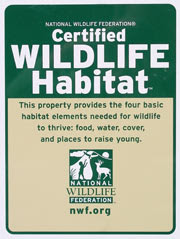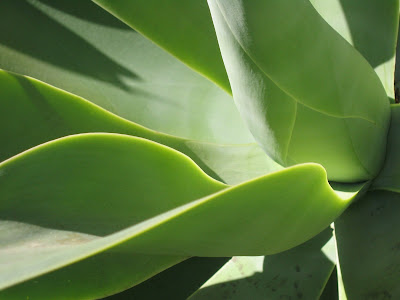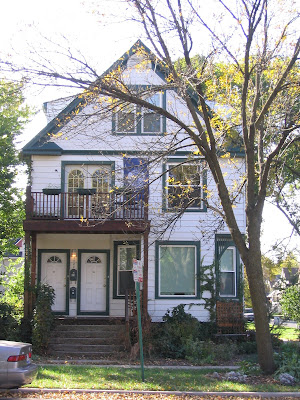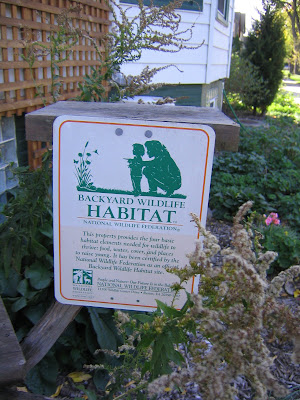blog
Garden for People with Dementia Wins Gold at the RHS Chelsea Flower Show
May 25, 2008
Agave at the Huntington
May 20, 2008
Garden of Hope and Courage
May 14, 2008
Thanks to Amy Lane at the Garden of Hope and Courage for submitting this garden for the Therapeutic Landscapes Database Gardens page. This healing garden in Naples, FL is located on the Downtown Naples Hospital Campus, and was built in honor of Jan Emfield, who died after a long battle with breast cancer. “By blending water, plants, sculpture and the natural topography of the earth into a therapeutic retreat, the garden will offer patients a chance to reduce their negative emotions and stress. Its purpose is to inspire hope and courage; two necessary ingredients in the fight against cancer and all illness.”
Spring Has Sprung (and the blog posts have become few and far between…)
May 7, 2008
Wrote a Thesis? Share It With Others!
March 30, 2008
I got an email last week from a landscape architecture student who is writing a thesis on therapeutic landscapes. She’s in the midst of her literature review, and though the Therapeutic Landscapes Database lists several theses, most of these are unpublished and not in digital format (with a couple exceptions). Sometimes schools keep copies, but they are often difficult to get ahold of once they’ve been filed away. What a shame, all that good work sitting on a shelf somewhere. It should be more easily accessible so that we can share information and learn from each other.
So, I’m putting the call out:
If you have written a masters thesis or a Ph.D. dissertation related to the subject of therapeutic landscapes, please email me an electronic version, as well as the full citation, and I will list it on the TLD References page. You can also contact me by posting a comment to this blog. Thanks, Nancy, for getting the ball rolling!
Winter Landscapes: Planting for Winter Interest
March 5, 2008
It’s finally March, which means winter is almost over, and spring is almost here. In some parts of the country and world, this means a lot. But before winter comes to a close and we forget about it until next year, some thoughts on designing outdoor spaces that hold your or your clients’ interest, even on the darkest, coldest days.
1. Use plant material that offers winter interest.
a. Evergreens such as pines, junipers, holly, bamboo, and ivy, to name just a few, offer glimpses of much-needed green at this time of year.
b. Berries that linger throughout the winter give us something colorful for us to look at (two of my favorites are winterberry holly (Ilex verticillata) and hawthorne (Crataegus viridis ‘Winter King’), and also provide much-needed food for birds and other wildlife. Some fruit, such as rosehips from Rosa species, can be harvested by us, too, for medicinal purposes (rosehips contain a huge amount of Vitamin C; note that care should be taken when harvesting any plant for medicinal purposes – research how to do it before just plucking and eating!)
c. Bark on trees can sometimes be even more beautiful than foliage. London plane trees and sycamores, Stewartias, alligator junipers, and several types of dogwood shrubs are just a few examples.
d. Attract wildlife. Even if the plant itself doesn’t look like much at this time of year, if it’s providing food or shelter for wildlife, then we have plenty to watch through the window from the warmth of inside. Of course, there are other ways to attract wildlife as well (see the previous couple posts) such as adding bird feeders, baths (you can even get heated ones), and houses. Even if your “garden” is a fire escape or a window ledge, you can install a bird feeder.
e. Plant early bloomers. Remember that witch hazel I mentioned on 1/21 (http://tldb.blogspot.com/2008/01/backyard-sanctuary.html)? She bloomed about two weeks ago, and is still going strong:

Spice bush (Lindera benzoin) is another early spring bloomer, and of course bulbs such as snowdrops, crocuses, and daffodils are delightful harbingers of warmer and brighter days to come. There are a number of good books out there now on planting for the seasons, as well as for texture, bark, berries, etc. I’ve listed a few on the Therapeutic Landscapes Database Plants page; if you buy these or any books from Amazon.com by clicking on the Amazon Associates logo in the left-hand column, a percentage of the sale goes to support the Therapeutic Landscapes Resource Center.
More Resources for Wildlife Habitat
March 2, 2008

In case you’re all fired up and want to learn more about creating wildlife habitat, here are a few more good links:
Backyard Wildlife Habitat: www.backyardwildlifehabitat.info/
Wildlife Habitat Council: www.wildlifehc.org/
Natural Resources Conservation Service: www.nrcs.usda.gov/Feature/backyard/wildhab.html
The Butterfly Site: www.thebutterflysite.com/
The Butterfly Website: http://butterflywebsite.com/
And just so you have everything together, here are the other key links I mentioned a couple entries back:
National Wildlife Federation’s Wildlife Habitat Certification: www.nwf.org/backyard/
National Wildlife Federation’s “The Green Hour”: www.greenhour.org/
The Children & Nature Network (started by Richard Louv): http://www.cnaturenet.org/
You’ll find a few more links on the Therapeutic Landscapes Database; look on the Plants, Related, and Links pages.
Many thanks to R, L, and O for the image!
Peace in Winter
March 1, 2008
Backyard Sanctuary Tip: Create a NWF Certified Wildlife Habitat
February 28, 2008
An important element of a healing garden is wildlife. Rachel and Stephen Kaplan, authors of The Experience of Nature (New York: Cambridge University Press, 1989), have studied environments that elicit “soft fascination,” which “occurs when there is interest in the surroundings sufficient to hold one’s attention while allowing room for reflection.” (You can view the abstract for “The Monastery as a Restorative Environment” on the InformeDesign website, at www.informedesign.umn.edu/Rs_detail.aspx?rsId=2191).
Supporting and observing wildlife invites soft fascination, which can reduce stress and restore cognitive function. Songbirds and hummingbirds to watch and listen to; butterflies to observe as they float on the breeze and glide from flower to flower; honeybees and bumble bees to nurture as they buzz around gathering pollen. Not to mention all of the smaller creatures like ladybugs, praying mantises, and earthworms that keep our gardens healthy. The Therapeutic Landscapes Database lists a few good references on their Plants and Links pages for creating wildlife habitat, but the National Wildlife Federation website is also a great place to start.
In fact, The NWF has a certification program for creating wildlife habitats; they’ll even give you this cool sign to post in your garden once you’ve completed the four basic steps of providing food, water, cover, and places to raise young. Go to www.nwf.org/backyard for more information.

Last October when I was in Chicago, I drove to Evanston (a suburb adjacent to Chicago) to see the house my mother grew up in. I was delighted to see that its current owners are avid gardeners who have one of those NWF signs. Below are a few images from the house. Note their clever solution to a blank, windowless wall!
Get Out There! Only you can prevent Nature-Deficit Disorder
February 13, 2008
According to the Center for Environmental Health, children’s contact with nature helps to ease attention-deficit disorder, aids cognitive development, enhances creativity, and reduces stress. And of course, with obesity at a critical level in this country, kids need to be running around outside now more than ever. A new report by the Nature Conservancy states that attendance has been falling at America’s national parks since the 1980s. They blame videophilia, but we can also see connections with Louv’s findings. Other reports indicate that early positive experience with nature fosters a strong sense of stewardship and environmental responsibility. In other words, if we want the next generation to take care of the planet, we’d better let them play outside on it now.
Clare Cooper Marcus has written a lot about the differences between children who play in organized, planned playgrounds and the more organic “adventure playgrounds” where kids use all sorts of different materials to build their own play structures.
Listen to an NPR report about Louv, “Saving Kids from ‘Nature Deficit Disorder,” and read an article about him in The Hartford Courant: “Losing Touch With Nature.” There’s also a great interview with Louv on Grist.
Take Action:
Two of my favorite websites on this subject are Louv’s organization, the Children & Nature Network, www.cnaturenet.org and The National Wildlife Federation’s The Green Hour, www.greenhour.org.
Even as adults, we can let our fears of sun damage, insect borne-disease like Lyme and West Nile, or even just slipping and falling on the ice keep us from venturing outside. It’s important to balance your fears with the benefits of going outside – Vitamin D from the sun, exercise, reduced stress levels, a change of scenery, the potential for wonder and discovery.
So go on, get off the computer now and go outside to PLAY!










